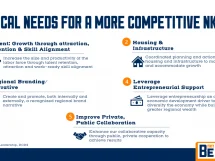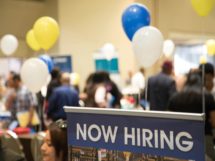Groundbreaking digital circuit courtroom systems set the pace for the nation
By Frank Goad
Good things take a bit of time, and development of the advanced presentation and legal communication system in the Jefferson County circuit courtrooms is ongoing, and nothing short of amazing. As of spring 2014, the Jefferson Courtroom Upgrade Project (JCUP) is likely the most advanced courtroom audio-visual system in the country.

It represents a unique, forward thinking understanding of how people who form the juries have changed. Even more amazing, private donations from members of the Louisville trial bar are its primary funding source. The state judicial system, which has budgetary woes like all other state branches, has had to contribute no capital to achieve a level of excellence that is not only a point of pride for Jefferson County courts, the Louisville Bar Association and the state but a model other states want to follow.
The current JCUP 2.0 phase is the second revision of the all digital system. An initial courtroom setup was abandoned after better, more flexible and feature-rich technology became available. The initial setup relied primarily on analog technology, while the new version is almost entirely digital and offers levels of user involvement and control not available originally. Each attorney’s team can control up to three video screens and accompanying audio channels in the courtroom; they can annotate and “mark up” materials on screen with a telestrator, much like those used on television sports and news broadcast.
Teams control the system by tapping tablet computer icons and “buttons” on its screen.
Every circuit courtroom in Kentucky now records video and audio of trials as they happen and includes them as part of case records. In JCUP courtrooms, digital evidence presented – video of a witness testifying or an attorney illustrating an exhibit with the telestrator – can go into the case record right along with the court’s audio and video. It’s a big plus should a case go up for appeal or come up for review for any reason. Any subsequent judge and jury can see in exact clarity how each side presented its case.
Planning for tomorrow’s jurors
“We are building the courtroom of the future to adapt to the juries of the future,” said Patrick W. Michael, a partner with the Louisville office of Dinsmore and Shohl, LLP, and JCUP’s Chief Executive Officer. “Millennials are used to seeing and using multiple streams of information at once. They expect rich information and can process it intelligently – this system speaks to the Millennial generation’s needs for learning and listening. Besides that, this is a big step in moving to a paperless legal system with this project.”
Judge McKay Chauvin of Circuit Court, Division 8, echoes Michael’s words.
“Whereas traditionally the plan seems to have been to build the courtroom of yesterday tomorrow, JCUP has committed to building the courtroom of tomorrow, today,” Chauvin said. “The days in which lawyers could effectively try cases using nothing more than a stentorian voice, a magic marker and a flip chart are gone. Times have changed. Jurors have changed. A steadily increasing percentage of those jurors have come of age in the multi information age.”
A major first step toward a paperless system was Judge Chauvin’s decision in 2009 to send out all court orders electronically, saving around $6,000 per year on postage, paper and envelopes.
A unique public-private partnership
Today’s advanced system is around because members of Louisville’s trial bar believed in a vision of what could be enough to pay for it. They knew they would save time and effort not having to arrange for projectors, screens, Internet access and more as well as setting it up in the courtroom.
They realized also, Michael said, that “this system levels the playing field for all involved in a trial. Video interviews and testimony by witnesses and consultants can be shown without having to pay them (again) to appear in court, meaning lower costs with a wider range of evidence to support their case.
“If nothing else, because of the flexibility and speed with which electronic documents can be shared, those involved get a speedier trial.”
There are few if any similar systems in the nation.
The project is under the guidance of JCUP LLC, whose sole member is the Louisville Bar Center dba the Louisville Bar Association. LBA attorneys provided feedback during the pilot phase to get their feedback and the trial bar, many of whom are LBA members, contributed around $775,000.
Michael praises as well Trinity Video Communications of Louisville. It worked closely with equipment manufacturers to ensure components all were compatible. Trinity is familiar with government and judicial systems, having worked with agencies including Homeland Security, the State Department and Department of Justice at the federal level and a variety of state and local governments and police departments.
Orienting the users
Before attorneys or their staff may use the system, they must pass a hands-on JCUP training course covering hearings and trials. JCUP is developing classes on how to build clear, concise and persuasive content for both a live trial jury or anyone viewing recordings in the future. With the system still being improved upon, user input is constantly evaluated to ensure instructions are clear, devices and user interfaces are well-designed, it performs as it should, and bugs are eliminated.
A fingerprint reader controls access to identify users, ensure they’ve been trained and that they are a JCUP contributor/member. Adequate funding is being ensured by a subscription system, with non-members given access on a pay-as-they-go basis.
Given the rapid changes in technology, it is likely that this system will look different in five years, Michael said. “The more we use it, the better it gets.”




















Add Comment